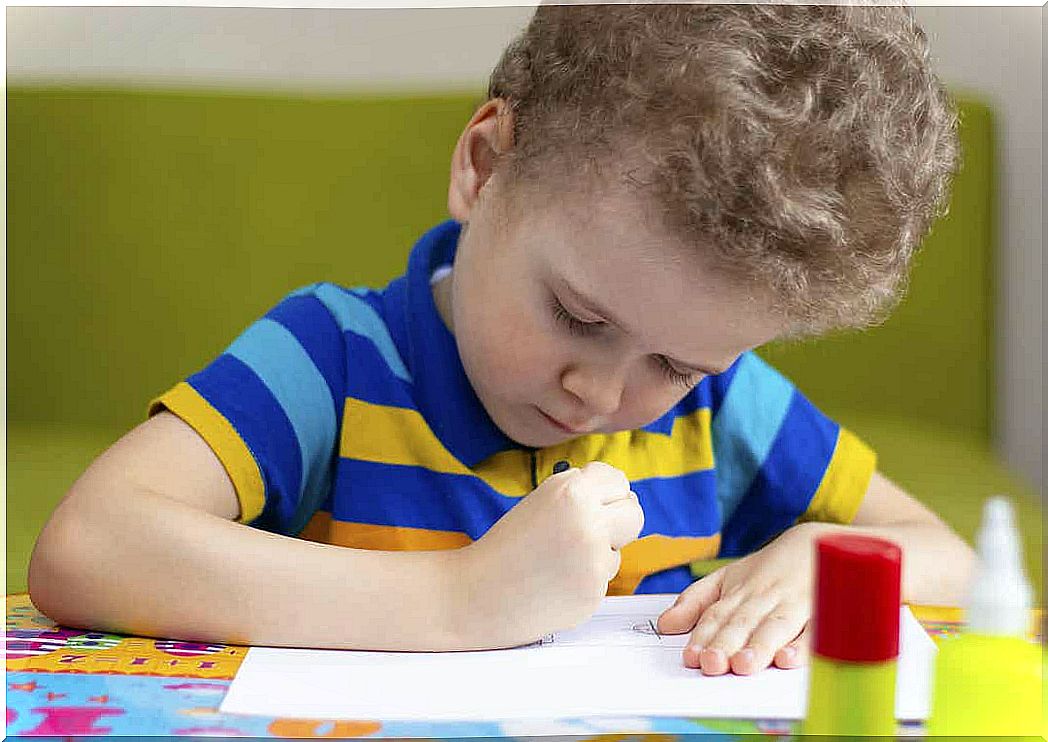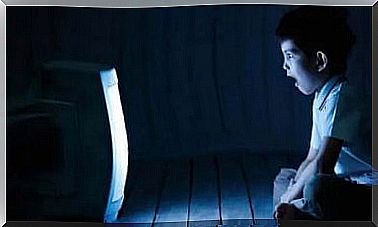The House Test: A Window Into A Child’s Emotional World

Drawing is one of children’s favorite activities. And anyone who has spent time with them knows that houses are one of the most recurring elements in their drawings. However, something so seemingly simple and trivial can give us important and interesting information about their emotional worlds. Therefore, we will take a closer look at the house test.
What does it consist of and what data can it reveal to us?
The house test is included in the so-called projective tests. Or more specifically within the graphic or expressive. This means that the drawings a child makes can open a window to their unconscious. For their most intimate experiences.
The characteristic of these tests is that the person does not know what is being evaluated with them and how. Therefore, the level of resistance or manipulation is minimal. Especially in the case of children, where drawing is such a natural and trivial activity.

What are house tests?
The house test simply consists of asking the child to draw a house that they find appropriate. It is important not to make comments that could affect their drawing. Be sure to allow them to perform the activity in a completely free way.
Once they are done, you will need to look at several aspects of their creation that will inform you about different aspects of your child. For example, their emotions, personality and social relationships.
How is the house test interpreted?
To get relevant information from the drawing, we need to look at the shape, size, colors and elements that make up the house. However, it is important to emphasize that you will later need to confirm the results with other types of tests. In addition, your interpretations must be global, and you must not take the meaning of an element as something crucial.
Size
Open, outgoing and sociable children usually draw large houses. They tend to be cheerful children who perceive their home as a welcoming place full of well-being. In contrast, small houses indicate that the child is shy, reserved, or introverted and may feel a certain level of social anxiety.
On the other hand, when the house is significantly high, it may indicate a child’s need to grow up quickly and gain independence. Likewise, if it is too low, it may indicate that the child is feeling anxiety, oppression or worry.
Doors and windows
Doors and windows represent the child’s relationship to their environment, their openness from the outside. Therefore, if they do not draw a door, or the door is too small, it is likely that the child wants to isolate himself and move away from the environment and social conditions. This would be reinforced if the door is closed or has a padlock or latch.
On the other hand, if the door is large and open, it will indicate that the child is friendly and enjoys relationships. They may even tend to be overly dependent on others.
Large windows, on the other hand, show a child who is open and eager to explore and learn. While small windows may indicate some wisdom, caution and mistrust of others.

Roof and chimney
The roof represents creativity and imagination. Thus, large roofs, sloping roofs or roofs hanging over the walls indicate great imagination. On the contrary, a house without a roof will be a sign of little creativity.
If the roof tiles are drawn in detail, you will also see a more rational and logical personality. If the roof is flat, there may be a feeling of oppression due to an overly rigid upbringing.
At the same time, the chimney and smoke coming out of it are a symbol of family relationships. If these elements are present, they will therefore indicate that the child perceives their home as a warm and cozy place and that there is good family communication. Absence of chimney and smoke will signify a cold home or lack of communication.
The function of the house test
The above are just some of the many aspects that we need to look at in order to interpret the house test, in order to get reliable information you need to interpret all the elements as a whole.
Although it is an indicative test that can provide interesting and valuable information, it is important to confirm it later with other more objective instruments.









